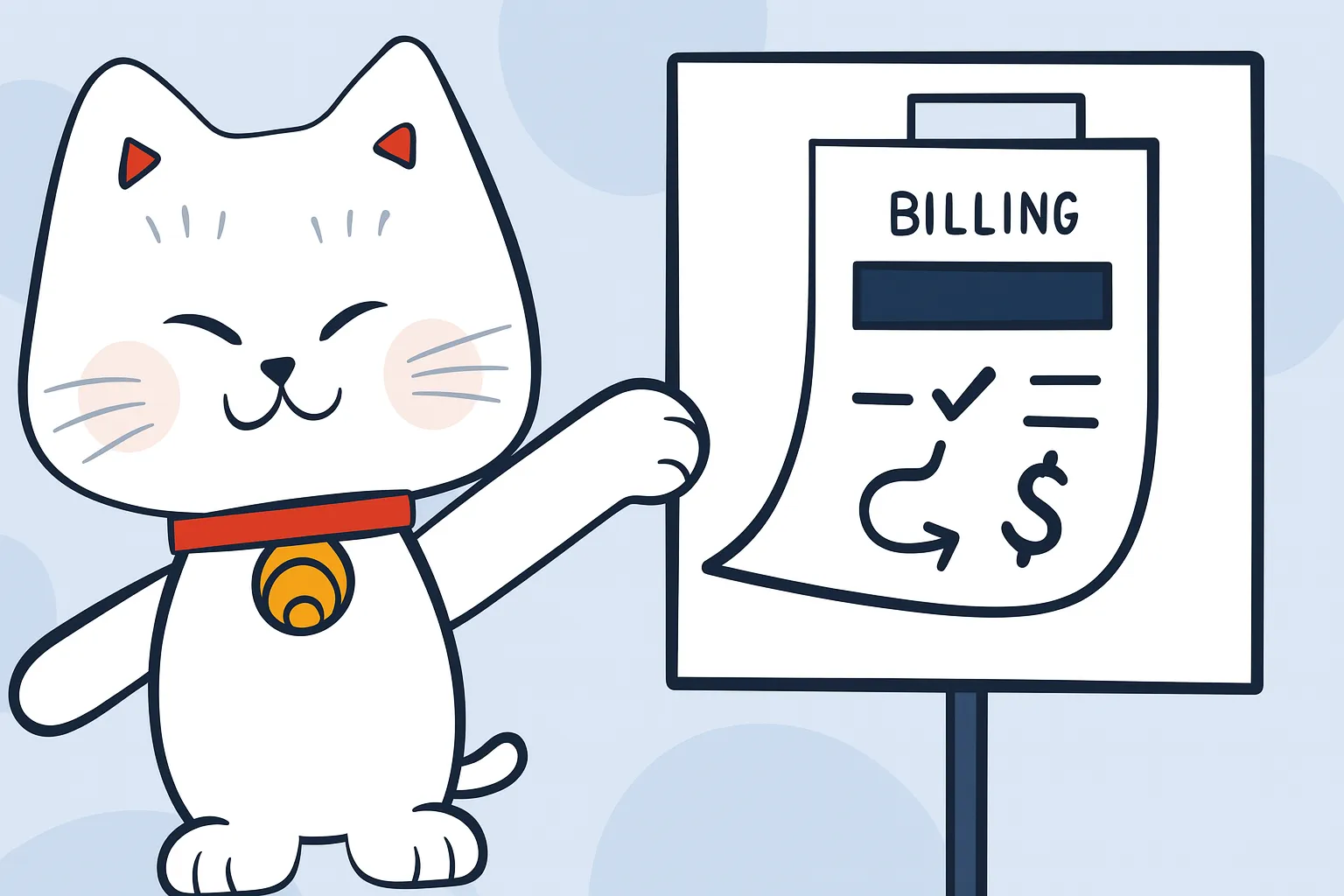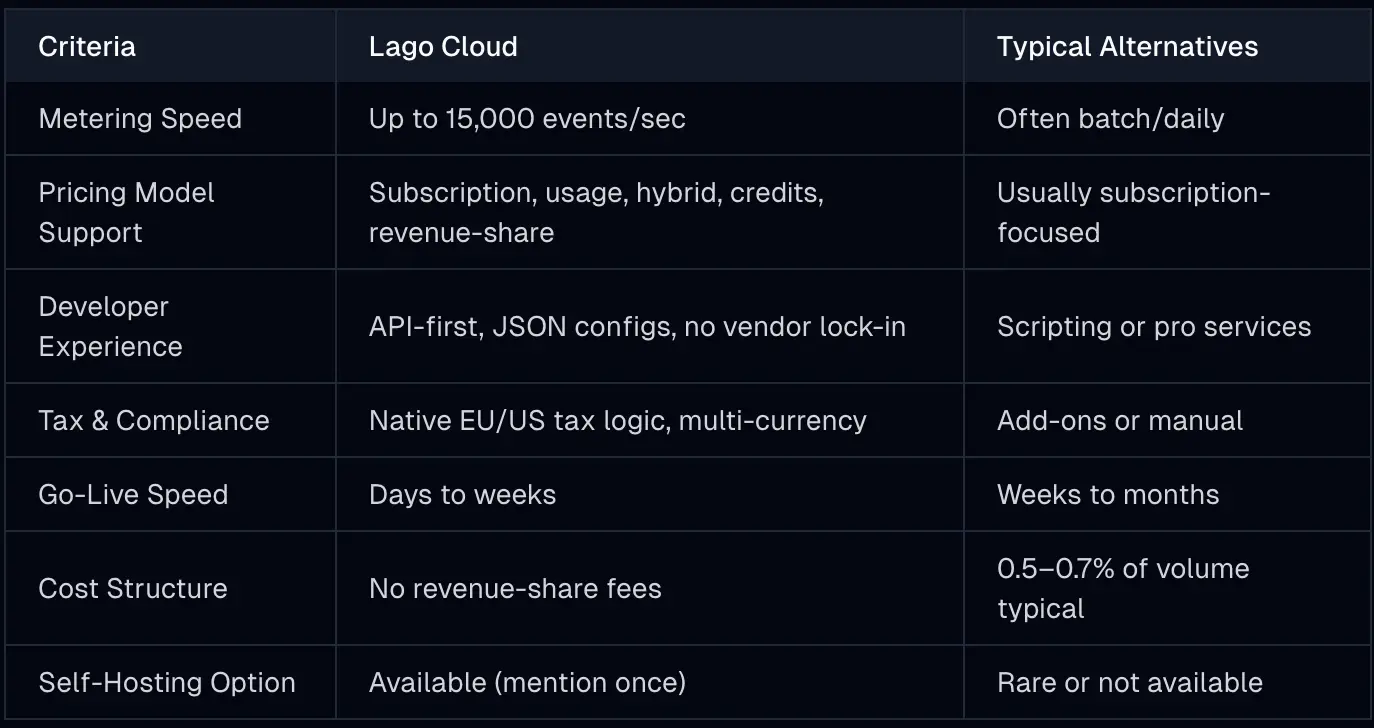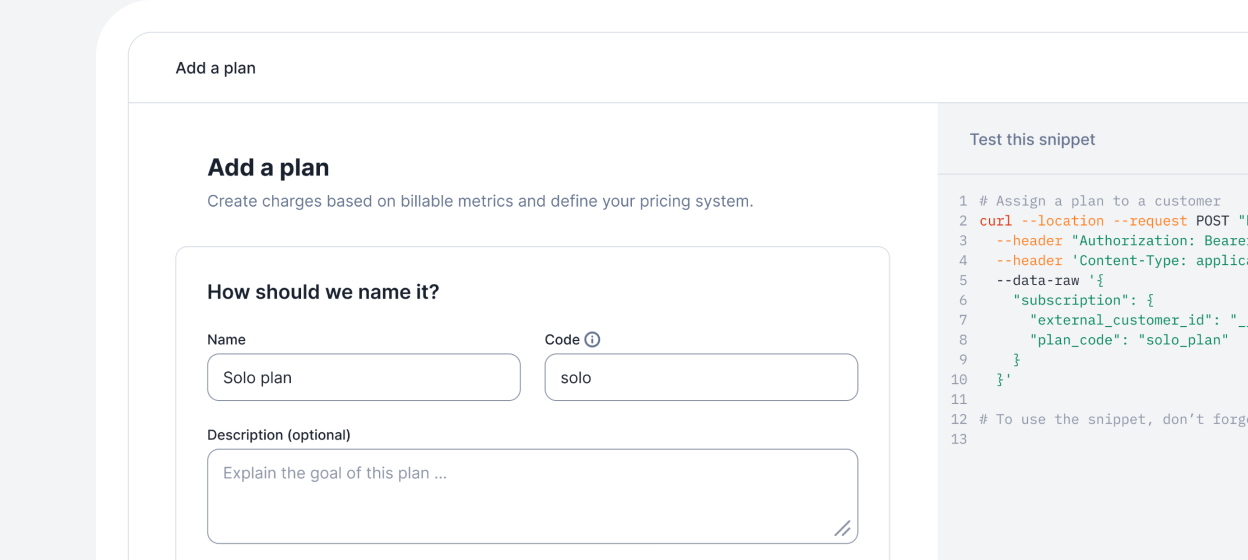SaaS Billing Best Practices: How to Optimize Your B2B Billing Process

The shift to usage-based and hybrid pricing models is transforming how B2B SaaS companies approach billing. According to OpenView, nearly 39% of SaaS companies now price primarily on usage, a sharp increase from a decade ago. This trend is especially pronounced in AI, fintech, and infrastructure sectors, where real-time consumption and complex contract terms are the norm. Yet, many teams still struggle with manual processes, billing errors, and inflexible systems that slow down time-to-cash and frustrate both finance and engineering teams[1].
This article outlines proven SaaS billing best practices, with a focus on technical accuracy, automation, and architectural clarity. It also highlights how platforms like Lago help companies handle the demands of modern B2B billing at scale.
Why SaaS Billing Is Complex for B2B Companies
B2B SaaS billing is more than just sending monthly invoices. Customers expect flexible contracts, custom pricing, and accurate metering—especially as AI agent pricing, pay-as-you-go, and hybrid models become standard. Each client may have unique terms, usage patterns, and billing cycles, making manual management nearly impossible at scale[2].
Common challenges include:
- Managing multiple pricing models (subscription, usage-based, hybrid)
- Handling mid-cycle upgrades, downgrades, and add-ons
- Supporting multi-currency and tax compliance across regions
- Ensuring accurate, real-time metering for AI, API, or infrastructure usage
- Automating invoicing, reminders, and collections to reduce errors
A robust billing infrastructure is essential for companies aiming to scale without sacrificing accuracy or customer trust.
1. Adopt Flexible and Transparent Pricing Models
Why pricing flexibility matters
Modern SaaS buyers expect pricing that matches their usage and business needs. Rigid, seat-based models are giving way to pay-as-you-go, credit-based, and hybrid pricing strategies. For example, AI platforms often bill per million tokens or GPU-seconds, while API providers may combine free tiers, tiered pricing, and annual commitments.
Best practices for pricing transparency
- Provide clear breakdowns of fixed and variable costs in contracts and invoices
- Display all add-ons, overages, and one-off charges up front
- Use a billing platform that supports custom pricing per client, not just standard plans
Example: A fintech API provider offers 10,000 free calls per month, then charges per call with annual minimums. Lago’s pricing engine can enforce these rules and automate breakage invoices, ensuring no revenue is left unbilled.
Key pricing models to support:
- Subscription (monthly/annual)
- Usage-based (metered billing)
- Hybrid (base fee plus usage or overages)
- Credit-based (prepaid credits consumed over time)
- Revenue-share or minimum commitments
2. Automate Metering, Invoicing, and Collections
Why automation is critical
Manual billing processes are error-prone and don’t scale. As customer counts and contract complexity grow, automation becomes essential for accuracy and efficiency.
Core automation capabilities:
- Real-time metering of any event (tokens, API calls, GB, seats)
- Automated invoice generation on custom schedules
- Dunning workflows for failed payments and collections
- Multi-currency and tax logic (e.g., EU VAT, US sales tax)
- Embedded customer portals for self-service access to usage and invoices
Example: An AI SaaS company processes thousands of billing events per second. Lago’s event-driven architecture ingests usage data in milliseconds, applies pricing rules, and generates invoices without manual intervention.
Benefits of automation:
- Reduces billing errors and disputes
- Accelerates time-to-cash
- Frees up finance and engineering resources
- Improves customer experience with timely, accurate invoices
3. Ensure Accurate Metering and Revenue Recognition
Why precision matters
Accurate metering is the foundation of trust in usage-based billing. Even minor discrepancies can trigger support tickets, disputes, and churn.
Technical challenges in metering:
- Tracking diverse metrics (API calls, storage, compute time)
- Handling burst traffic and high event volumes
- Syncing usage data with pricing and invoicing engines
Best practices:
- Use event-driven systems that meter in real time, not daily aggregates
- Regularly audit metering pipelines for gaps or anomalies
- Integrate billing with product analytics to reconcile usage and revenue
Example: AI platforms like Mistral and Together.ai bill per million tokens with subscription floors or GPU-hour add-ons. Lago’s real-time metering ensures every event is captured and billed accurately, even during traffic spikes.
4. Support Global Operations: Multi-Currency and Tax Compliance
Why global support is non-negotiable
B2B SaaS companies often serve customers across multiple countries, each with its own tax rules and currency requirements. Non-compliance can lead to penalties and lost business[3].
Key requirements:
- Automated tax calculation based on customer location (e.g., EU VIES VAT checks)
- Multi-currency invoicing with FX rounding
- Localized payment methods and schedules
Best practices:
- Choose a billing platform with built-in tax logic and compliance features
- Offer customers the ability to pay in their preferred currency
- Regularly update tax rules to reflect regulatory changes
Example: A global SaaS provider invoices in USD, EUR, and GBP, applying the correct VAT or GST for each region. Lago’s tax engine automates these calculations, reducing manual work and risk.
5. Integrate Billing with CRM, ERP, and Analytics
Why integration drives efficiency
Billing doesn’t exist in a vacuum. Integrating your billing system with CRM, ERP, and analytics tools ensures data consistency, reduces manual entry, and enables better forecasting[4].
Integration best practices:
- Sync customer and contract data from CRM to billing
- Push invoice and payment data to ERP for accounting
- Use billing analytics to monitor MRR, churn, and collection rates
Benefits:
- Single source of truth for customer and revenue data
- Faster, more accurate reporting
- Improved ability to predict and respond to customer behavior
Example: Lago’s open API and webhooks make it easy to connect billing with your existing data warehouse and finance stack, supporting both real-time and batch workflows.
6. Regularly Audit and Optimize Billing Workflows
Why continuous improvement matters
Billing errors, inefficiencies, and outdated processes can erode trust and slow growth. Regular audits help identify gaps and opportunities for optimization[5].
Audit checklist:
- Review metering accuracy and event ingestion rates
- Test invoice generation and delivery workflows
- Analyze dunning and collections performance
- Solicit customer feedback on billing clarity and transparency
Optimization tips:
- Use sandbox environments to test new pricing models before rollout
- Monitor the impact of pricing changes on revenue and churn
- Adjust billing rules and workflows as your business evolves
SaaS Billing Platform Comparison: What Sets Lago Apart?

Frequently Asked Questions
What is usage-based billing, and why is it growing?
Usage-based billing charges customers based on actual consumption (e.g., API calls, tokens, compute hours). It aligns costs with value and is now the primary model for nearly 40% of SaaS companies, especially in AI and infrastructure.
How do I handle hybrid pricing models?
Hybrid pricing combines a base subscription with usage or overage charges. A flexible billing engine lets you define custom rules, apply minimums, and automate true-ups without manual intervention.
What are the risks of manual billing?
Manual billing increases the risk of errors, delays, and revenue leakage. Automation reduces these risks and supports scale.
How does Lago support compliance and global billing?
Lago automates tax calculation, supports multi-currency invoicing, and is SOC 2 Type 2 certified. An optional self-hosted edition is available for companies needing full data control.
Conclusion
Optimizing B2B SaaS billing requires more than just automating invoices. It demands real-time metering, flexible pricing, global compliance, and seamless integration with your tech stack. As usage-based and hybrid models become the norm, companies that invest in robust, developer-friendly billing infrastructure will see faster time-to-cash, fewer errors, and higher customer satisfaction.
Lago Cloud delivers the speed, flexibility, and control that modern SaaS and AI companies need to stay ahead. To see how Lago can help you optimize your billing process, explore the platform or request a technical demo.
Focus on building, not billing
Whether you choose premium or host the open-source version, you'll never worry about billing again.
Lago Premium
The optimal solution for teams with control and flexibility.

Lago Open Source
The optimal solution for small projects.

